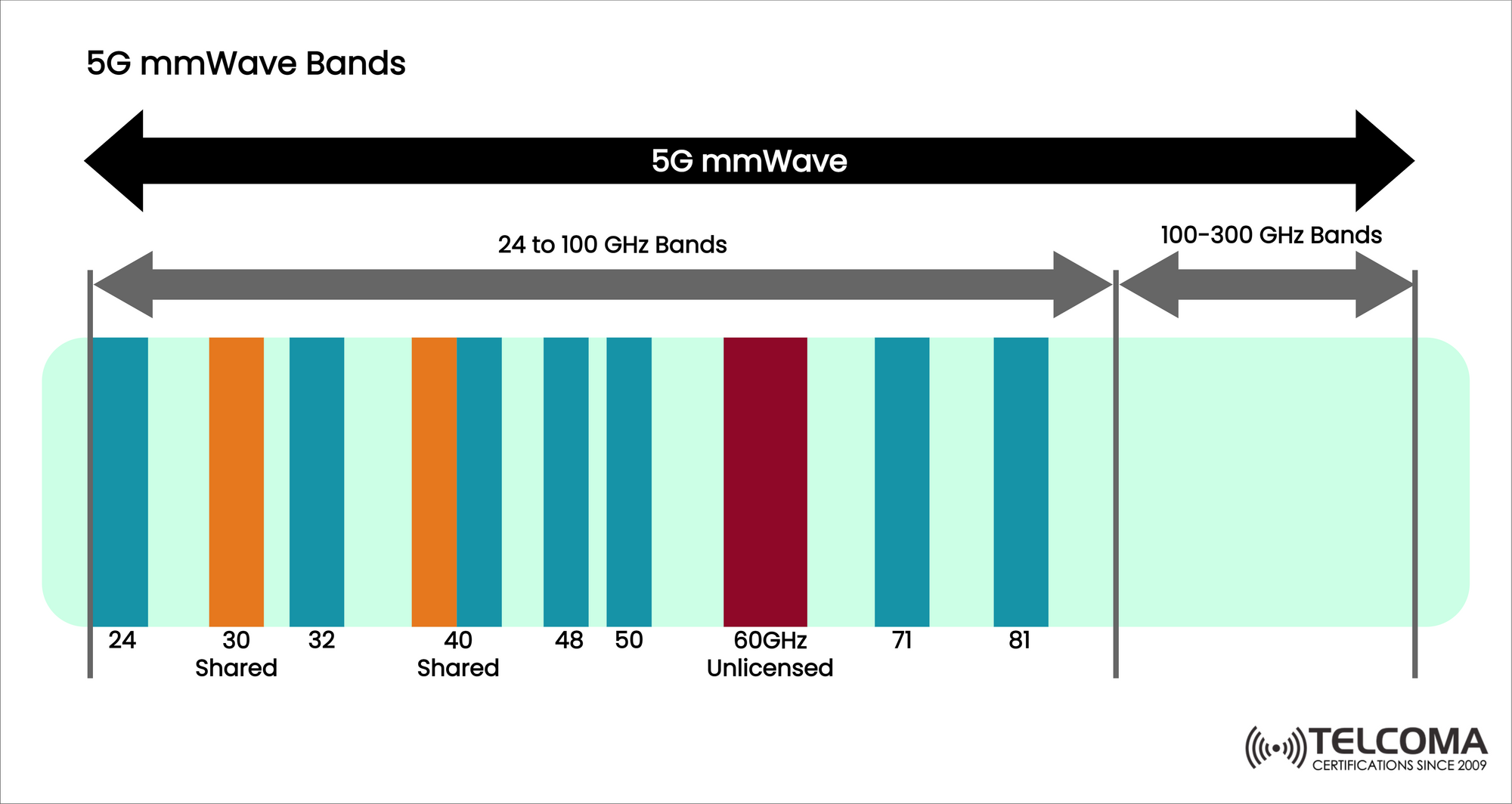Understanding Millimeter Wave Spectrum for 5G Networks



Introduction:
Millimeter waves are a part of the electromagnetic spectrum that operates at a frequency range of 30 to 300 GHz. This spectrum has been underutilized due to its limitations, including the difficulty of transmitting and receiving signals over long distances, atmospheric absorption, and interference from other sources. However, with the advent of 5G networks, millimeter waves are becoming an essential part of the communication infrastructure.
This article discusses the technical aspects of the millimeter wave spectrum and its application in 5G networks.
Understanding Millimeter Wave Spectrum:
Millimeter waves are a type of electromagnetic radiation that falls in the frequency range of 30 to 300 GHz. This frequency range is higher than the traditional microwave frequencies used in 4G networks, which operate at a frequency range of 700 MHz to 2.6 GHz. The higher frequency of millimeter waves allows for higher data rates and faster communication speeds. However, it also comes with its limitations, including the following:
- Limited range: Millimeter waves have a limited range and can only travel short distances due to their high attenuation rate. Attenuation refers to the loss of signal strength as it travels through a medium. The higher the frequency, the higher the attenuation rate, which makes it difficult for millimeter waves to penetrate obstacles and travel long distances.
- Atmospheric absorption: Millimeter waves are absorbed by atmospheric gases, including water vapor and oxygen. This absorption limits the range of millimeter waves, particularly in humid environments.
- Interference: The high frequency of millimeter waves makes them susceptible to interference from other sources, including other wireless devices, and even weather conditions.
- Line-of-sight requirement: Millimeter waves require a clear line of sight between the transmitter and receiver to maintain a strong signal. Obstacles, including buildings and trees, can interfere with the signal and limit its range.
Despite these limitations, millimeter waves have several advantages, including the following:
- High data rates: Millimeter waves offer higher data rates than traditional microwave frequencies, making them ideal for applications that require high-bandwidth connectivity.
- Low latency: Millimeter waves offer low latency, which is the time it takes for a signal to travel from the source to the receiver. This low latency makes millimeter waves ideal for applications that require real-time communication, including virtual reality, autonomous vehicles, and remote surgery.
- Massive MIMO: Millimeter waves enable massive multiple-input and multiple-output (MIMO) technology, which uses multiple antennas to transmit and receive signals simultaneously. This technology can increase the capacity of a wireless network and improve the signal quality.
Application of Millimeter Waves in 5G Networks:
5G networks are designed to offer higher data rates, lower latency, and improved network capacity compared to 4G networks. Millimeter waves are a critical component of 5G networks and are being used to achieve these objectives. The following are some of the applications of millimeter waves in 5G networks:
- High-bandwidth applications: Millimeter waves are being used to provide high-bandwidth connectivity to devices, including smartphones, tablets, and laptops. This connectivity enables faster downloads and uploads, streaming of high-definition video, and improved web browsing.
- Fixed wireless access: Millimeter waves are being used to provide fixed wireless access (FWA) to homes and businesses. FWA enables high-speed internet connectivity without the need for traditional wired infrastructure, including fiber optic cables. This technology is particularly useful in rural areas where wired infrastructure is limited.
- Small cell networks: Millimeter waves are being used to deploy small cell networks, which are low-powered wireless access points that provide coverage over a small geographic area. Small cell networks are being deployed in densely populated urban areas to increase network capacity and improve coverage.
- Autonomous vehicles: Millimeter waves are being used to enable communication between autonomous vehicles and infrastructure. This communication enables vehicles to exchange information with other vehicles and the infrastructure in real-time, improving safety and reducing congestion.
- Industrial applications: Millimeter waves are being used in industrial applications, including manufacturing and logistics, to enable real-time communication between machines and equipment. This communication enables machines to exchange information and coordinate their activities, improving efficiency and reducing downtime.
Challenges in Deploying Millimeter Waves in 5G Networks:
Despite the benefits of millimeter waves in 5G networks, several challenges need to be addressed to enable their widespread deployment. The following are some of the challenges:
- Limited range: As discussed earlier, millimeter waves have a limited range and can only travel short distances. To overcome this limitation, networks need to deploy more base stations, which can be expensive and require regulatory approval.
- Line-of-sight requirement: Millimeter waves require a clear line of sight between the transmitter and receiver to maintain a strong signal. This requirement can be challenging to achieve in urban environments, where buildings and other obstacles can interfere with the signal.
- Interference: The high frequency of millimeter waves makes them susceptible to interference from other sources, including other wireless devices and weather conditions. This interference can impact the quality of the signal and limit its range.
- Cost: The deployment of millimeter wave infrastructure can be expensive, particularly for small cell networks. This cost can be a barrier to deployment, particularly in rural areas where the return on investment may be low.
Conclusion:
Millimeter waves are becoming an essential component of 5G networks, enabling higher data rates, lower latency, and improved network capacity. While millimeter waves offer several benefits, including high data rates and low latency, they also come with their limitations, including limited range, atmospheric absorption, and interference. To deploy millimeter waves in 5G networks, several challenges need to be addressed, including the need for more base stations, line-of-sight requirements, interference, and cost. Despite these challenges, millimeter waves are expected to play a crucial role in the deployment of 5G networks and the advancement of wireless communication technology.
